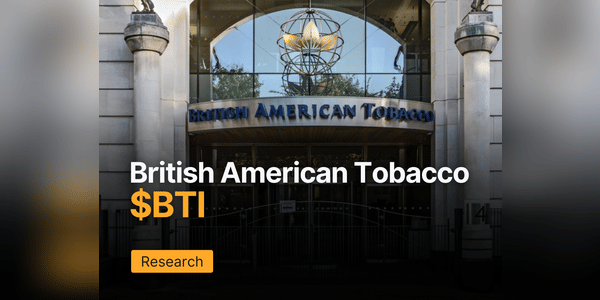British American Tobacco is one of the largest international tobacco companies in the world. The company was founded in London in 1902 as a result of a merger between British and American tobacco companies. Today, the company is headquartered in London and operates in more than 180 countries. Results over the past few years have been a bit scrubby, but the company continues to grow. Is its stock now at a fair price?

The company manufactures and sells a wide range of tobacco and nicotine products, including cigarettes, electronic cigarettes and heated tobacco-based products. Some of their best known brands include Dunhill, Kent, Lucky Strike, Pall Mall and Rothmans.
In recent years, the company has focused on expanding its portfolio to include 'new categories', which include less harmful alternatives to conventional cigarettes, such as vaporizers and nicotine sachets.
$BTI is also known for its strong commitment to sustainable business and responsible marketing. The company invests in…